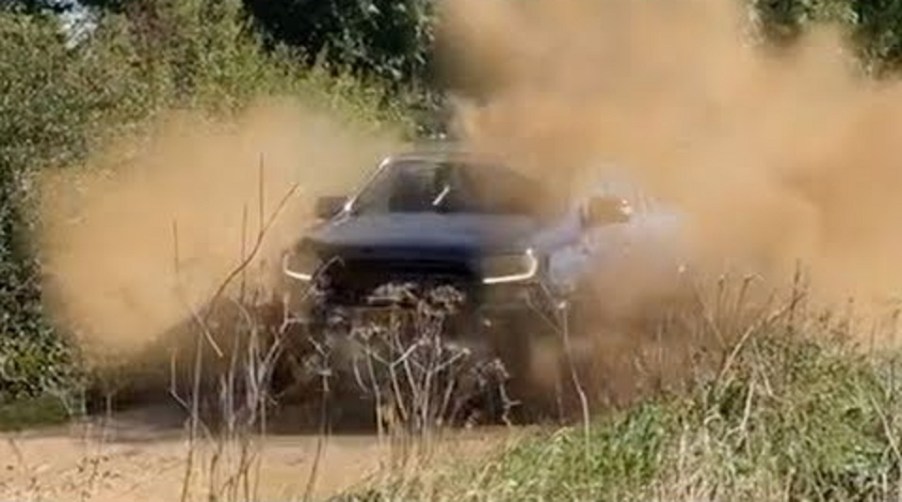
This Ford Ranger Raptor Off-Road Review Is One You Have to Watch
Previously, we featured a review of the not-sold-here Ford Ranger Raptor, courtesy of YouTube channel Smith and Sniff. While that review did look into a lot of the Ranger Raptor’s features, it took place almost exclusively on paved roads. Granted, many Raptors on both sides of the pond prefer to prowl the pavement. But the truck’s built from the factory to dominate on dirt. So, Smith and Sniff have brought it back to hit the greens. Let’s see how the Ford Ranger Raptor performs off-road.
Ford Ranger Raptor Off-road Relevant Specs

The Ranger Raptor’s visual differences from the base model may draw immediate attention, but some of the most important mods are under the skin.
Like its bigger brother, the F-150 Raptor, the Ranger Raptor gets Fox Pro reserve-reservoir shocks and model-specific BFGoodrich off-road tires. Those shocks are also position-sensitive, so they’re soft when you jump but hard when you need to corner. The rear suspension has one more upgrade: coils, instead of leaf springs. There’s also an aluminum skidplate at the front.

The transmission, a 10-speed automatic, gets a Sport Mode, as well as magnesium paddle-shifters. The Ranger Raptor actually gets several new driving modes added to its Terrain Management SystemTM. Most notably, Baja Mode. More relevant in the muddy fields of the UK, however, are things like the hill descent control. There’s also something called Trail ControlTM, which is essentially off-road cruise control. Luckily for North American customers, it’s available both on the F-150 Raptor and the Ranger FX4.
Unfortunately, the Ranger Raptor is let down in one place: under the hood. The sole engine choice is a 2.2-liter four-cylinder turbodiesel, making 213 hp and 369 lb-ft. CarWow has drag-raced the Ranger Raptor several times, and the results have been, um, not great.
Then again, off-roading isn’t all about speed.
How Smith and Sniff Fared
The duo explored the muddy trails and forest between private farming fields. Driving and riding on such pathways is called green-
Richard mostly stuck to the mud and rocks, but Jonny kept urging him to use ‘the verge’ (go into the grass and vegetation). The first part of the ride consisted of speeding down a rocky mud trail, scaring pheasants. But the birds weren’t only on the outside. Both Richard and Jonny—and the in-cabin microphones—kept hearing what sounded like a peeping baby chick. They looked around the entire car, even getting out to see if a bird had gotten trapped (not as unlikely as you’d think).
Richard and Jonny never figured out what was making the squeak, or even where it was coming from. However, it is possible the fancy Fox suspension was to blame. Several F-150 Raptor owners have reported squeaking coming from their suspension, which is similar to the Ranger Raptor’s. Ford is allegedly aware of the issue, but we have not heard any official announcement on the matter.
After resolving to just ignore the squeak, Richard and Jonny pressed on into a nearby wood. The two did worry briefly about getting the Ranger Raptor stuck in the mud. But that never happened; the truck just trundled serenely through the undergrowth.
Ford Ranger Raptor Off-Road Roundup

‘Serenity’ is a great way to describe Richard’s and Jonny’s mood in the test. Or maybe ‘levity’. Although light on technical details, the simple fact that Richard was more worried about the truck getting stuck than it breaking is arguably the best way to sum
The good news, then, is that the Ford Ranger Raptor can handle itself off-road. Now we just have to hope Ford brings the next-gen truck here.


